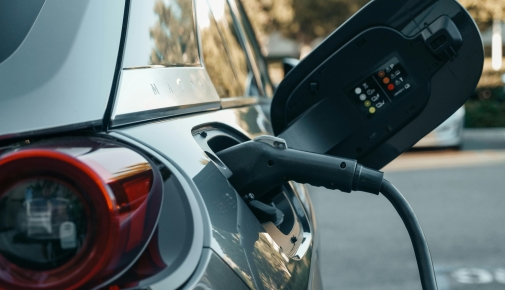9000+ Cashless Garages
1.2 Cr+ Policies Sold

9000+ Cashless Garages
1.2 Cr+ Policies Sold



Car insurance Online, Up to 90% Discount
It's a Brand New Car

The 21st century is known to be the base for a sustainable future. It is the time when people are looking for alternate measures and ways of living life with equal focus on eco-friendliness, sustainability, and cost-saving.
When it comes to sustainability and reducing carbon emissions, the first thing that comes to your mind is battery electric vehicles or battery electric cars. Electric vehicles use batteries to run or operate and eliminate the use of petrol or diesel.
Here is a complete guide on battery electric vehicles, their components, workings, and other crucial details.


There are various models of electric vehicles, and the components of these vehicles differ significantly. However, the main components of any battery electric cars or vehicles are listed hereunder.
The powerhouse or soul of all electric vehicles is the traction battery pack. This pack is a collection of individual cells that store electrical energy. Without any charge or battery, an electric vehicle cannot work.
Similar to the fuel required in normal vehicles, the battery is an integral part of a BEV operation. It acts as an energy storage system and provides direct current to further parts, including the power inverter.
The electric vehicles use rechargeable batteries, signifying regular charging to maintain. Electric cars or vehicles typically use lithium-ion batteries due to their affordability and high-energy transmission.
The traction battery pack generates direct current and passes it to the inverter for current conversion. This component converts DC into AC (Alternate Current).
As a result, it acts as a driving force to start the engine or motor. Inverter is also beneficial during regenerative braking. There are various categories of power inverters, such as single-phase and three-phase inverters, each with its own advantages and considerations.
Along with the inverter, the controller plays a crucial role in starting the electric motor. This part of any AEV is used to maintain and control the distribution of electrical energy to electric motors.
EVs' voltage and energy requirements differ; thus, the controller is crucial in determining the motor speed. The energy distribution depends widely on voltage variation.
This component pushes the vehicle's wheel through the electric power provided by the battery. Nowadays, many battery electric cars have both propulsion and regenerative functions.
You will be required to charge your vehicle batteries regularly to keep your vehicle in running condition. There are various types of chargers, varying in charging speeds, quality, etc. These chargers obtain energy from external sources. You can get an on-board charger (fit in the car) and an off-board charger (not fitted in the vehicle).
There are several other parts present in battery electric cars. These are:
After looking at the components, understand how these components work to run the vehicle.
The demand for BEVs and AEVs is growing due to the various irreplaceable and attractive advantages. The following points highlight the most common merits of electric vehicles.
The most remarkable highlight of any electric vehicle is its zero Carbon Dioxide emissions. Unlike petrol and diesel, BEVs do not contribute to pollution or degrade the environment. This significant environmental benefit should inspire and motivate you to consider BEVs as an excellent eco-friendly transportation option.
As a result, it lowers your carbon footprint and proves to be an excellent eco-friendly transportation option. So, next time you think about BEVs, think about the impressive air quality.
Since the vehicles have a few moving and detachable parts, they require lower maintenance than regular fuel-powered vehicles. This translates to lower annual running and servicing costs, making you feel financially savvy and responsible when choosing these vehicles.
Electric-powered cars are top-notch when it comes to the performance and acceleration. They offer a smooth transition and firm control while driving, eliminating the need to shift gears. This exciting performance should intrigue you and make you consider BEVs as a better option in terms of performance.
No engine is found in these types of vehicles. As a result, there is no noise pollution while you drive any electric-powered vehicle. The electric motor works so silently that you cannot even feel the motor has started. Even roadside pedestrians cannot feel an AEV or BEV approaching them.
Many states and countries have started providing incentives and rewards to promote using AEVs and BEVs. For example, you can attract tax benefits and incentives from the government when purchasing or registering your electric vehicle.
It would help if you did not miss out on certain limitations of these electric-powered vehicles while buying an electric car. Have a look at these demerits-
Your electric car battery needs to be charged regularly to function properly. You can charge the battery at home, public stations, or office. You will need to find a charging station first and then get your vehicle battery charged for some hours. Finding a charging station is a difficult and time-consuming process, reflecting the need for charging infrastructure.
The frequency of charging is significantly high in AEVs and BEVS as compared to the frequency of filling petrol or diesel in conventional vehicles.
In other words, an average petrol or diesel tank can cover 500 to 700 miles, whereas a one-time battery charge can only cover around 250 or 300 miles. Therefore, the limited driving range of electric vehicles is a point of concern.
If you use your car daily, you might replace your car batteries more often. A battery has a lifespan of around 10 to 18 years, with many batteries ending in 8 to 10 years. Battery replacement depends on the car model, driving habits, and how you maintain it.
Old models can take a lot of time to charge their batteries. On average, an electric car takes 4 to 6 hours to charge. This time duration can significantly vary if you use a 22kW charger. On the other hand, it takes hardly 5 minutes to fuel your petrol or diesel tank.
Electric cars fall in the category of expensive vehicles. The initial purchase cost of these vehicles makes it difficult for many people. The price of BEVs and AEVs is high due to high battery costs, manufacturing expenses, chagrin costs, expensive technology, etc.
Decades have passed, and the evolution of battery-electric vehicles has been impressive. The high-quality materials used and excellent performance delivery are the major reasons for BEVs' growing popularity. Do not wait for the last moment; research your AEV and get one to contribute to a sustainable future.